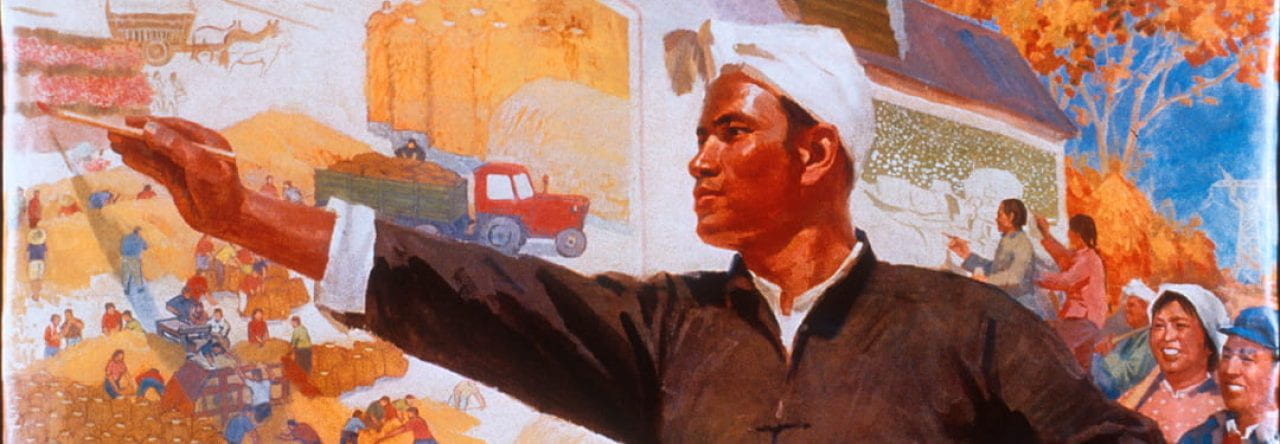Realism has long been associated with Jiang Zhaohe and is arguably the most salient characteristic of his work, Jiang Zhaohe is regarded as one of the most important influences in developing figure painting in Beijing (Andrews).
The reason it is important to emphasize Jiang’s stylistic features of his art is because it represents a broader shift of Art in China, art during the 1940 was politically charged and often a point of contention (Migration World Magazine). Focusing on the stylistic feature allow us to also consider the accuracy and skill Jiang possessed in capturing realism. This is significant as he was far ahead of his time with the implementation of ink and brush to capture realism in regards to figure painting. The preservation of traditional stylist technique was influenced by Xu Beihong, as Jiang learned under him. (Xiaosheng). This would be significant as it allowed Jiang to position himself as one of the pioneers in figure painting.
This exhibition I wish to focus on the stylistic technique of ink and brush implemented by Jiang to capture realism. The improvement of this stylist technique also reflects a political shift in the importance of raising standards and style in works of art in China. art as it exemplifies the preservation of Chinese ink and brush style yet at the same time is the product arising from the need to modernize art and raise its standards.

| Work of Jiang Zhaohe from a Czech Private Collection
Jiang Zhaohe (1904 – 1986) Old Man 1940 |
https://trinity-collections.blogspot.com/2016/08/fine-chinese-paintings-jian-zhaohe.html?m=1
References
Sun, Xiaosheng. “Jiang Zhaohe, Portraying the Lives of Working People 2016-08-03 16:29:27 Source£ºbeijing .” charmingBeijing. Accessed April 28, 2022. http://www.charmingbeijing.com/eng/index.php?m=content&c=index&a=show&catid=183&id=965.
Sullivan, Michael. “Art in China since 1949.” The China Quarterly, no. 159 (1999): 712–22. http://www.jstor.org/stable/655764.
“CHINESE REFUGEES IN THE PAINTINGS OF JIANG ZHOAHE.” 2000.MIGRATION WORLD MAGAZINE 28 (1): 28-30. HTTPS://LIBPROXY.UNION.EDU/LOGIN?URL=HTTPS://WWW.PROQUEST.COM/SCHOLARLY-JOURNALS/CHINESE-REFUGEES-PAINTINGS-JIANG-ZHOAHE/DOCVIEW/212015350/SE-2?ACCOUNTID=14637.


Paxton Ouellette
As I’ve been working on my own art exhibition, which focuses on the Monument to the People’s Heroes and is a bas-relief, I think that it is very important to consider the techniques used by other artists who also employed socialist realism. However, something that strikes me about this post is how Jiang Zhaohe was able to blend this style, which is strongly modeled after Soviet art, with traditional Chinese ink and brush.
It’s interesting that the use of social realism was considered to be raising the artistic standard when ink and brush art itself was considered to be a piece of high-class art, with traditional pieces focusing on nature being disliked by the CCP–I’m thinking of the one that focuses on nature and has a small bridge in the back. If anything, it would make more sense to me that the implementation of social realism would almost be lowering it, as the viewer no longer needs to fully immerse themselves into the work. In the piece you selected to show with your art exhibition post, there is a clear combination of the two styles, with the man’s facial features being so clear and his body gradually shifting into a more traditional style of Chinese art. This is something I’ll have to keep in mind as I continue looking into my own pieces. Are there any references to Chinese heritage present–even if it isn’t directly related to art itself?
Lily van Baaren
I am not sure if Jiang’s technique of ink and brush is potent enough..? Maybe you should think about exploring more ways he is able to capture a sense of realism in his work. What other stylistic techniques does he use? I think it might also be a nice idea to compare and contrast his works and others in order to show his “political shift” that you mention. I might also include more information about his art influences such as Xu Beihong, and how exactly Jiang decided to incorporate his learning into his work. So far, it seems like you have a really firm grasp on your topic. I am excited to see how you will showcase Jiang’s works in the exhibition space.